Justine Kurland is a contemporary American photographer. Best known for her large-scale C-prints of rural landscapes inhabited by nude women, Kurland’s surreal images evoke pagan utopias or post-apocalyptic or pre-industrial worlds.
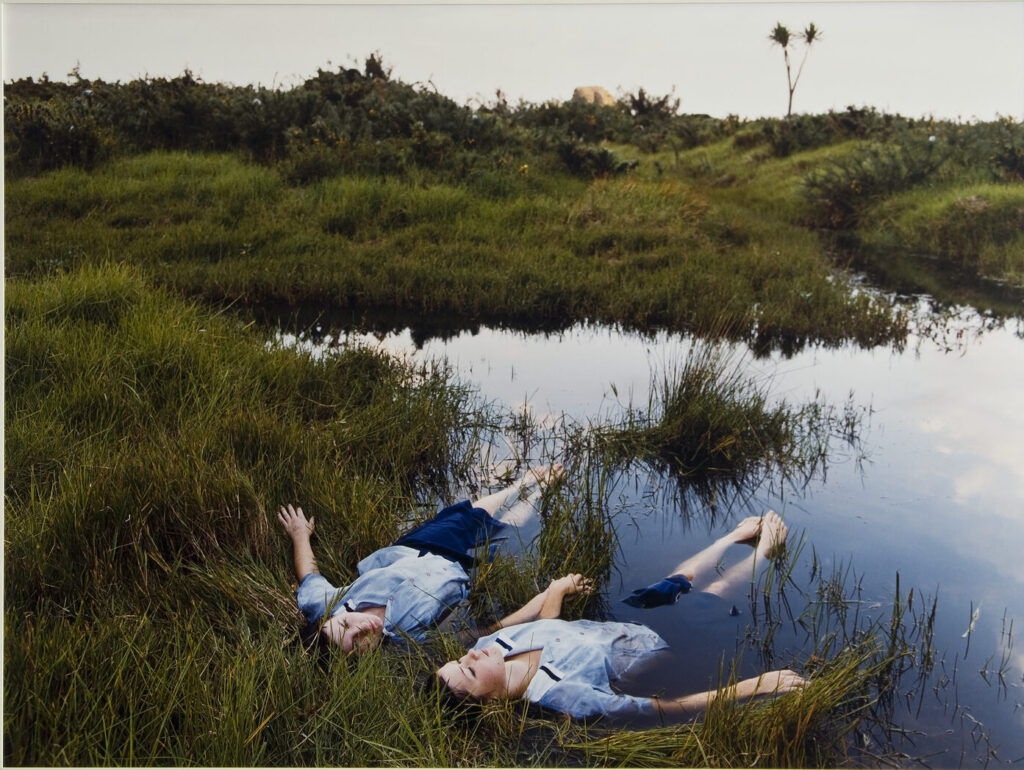
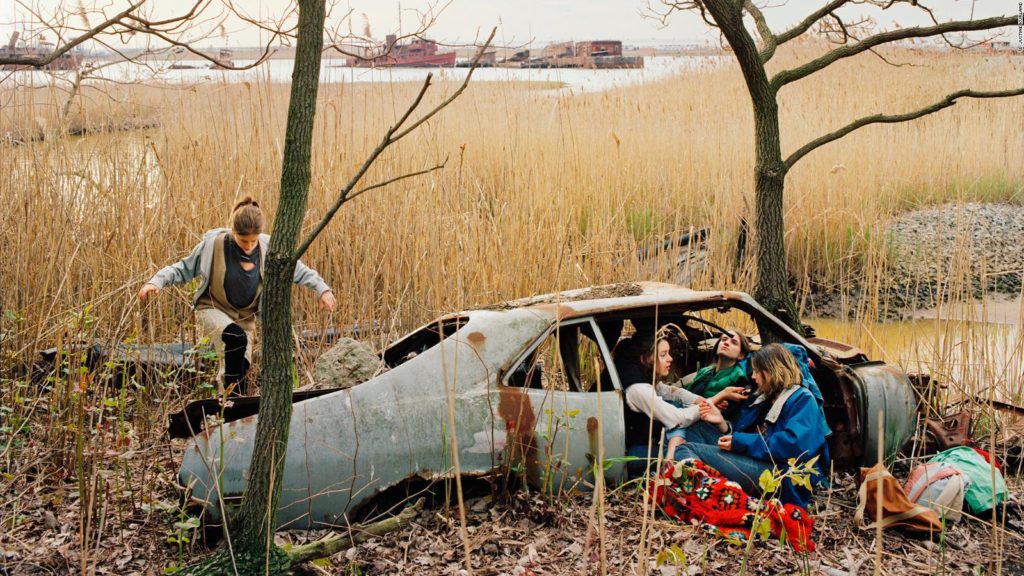
Her work often depicts communes in rural America as her subject matter, inspired by 19th-century idyllic English landscape painting, children’s fairy tales, and Julia Margaret Cameron’s photographs, among others sources.
-Girl Pictures
I am personally interested in her ‘girl pictures’ work. Justine Kurland’s take on the classic American tale of the runaway takes us on a wild ride of freedom, memorializing the fleeting moments of adolescence and its fearless protagonists. She captures pictures of girls in woodland environments, running around, talking, lying down, sitting in trees ect.

Adventure stories were a source of inspiration for this project. But so many of those narratives center around young boys. The girls in Girl Pictures plagiarize these myths until they become their own, until the original myth is hardly relevant anymore.
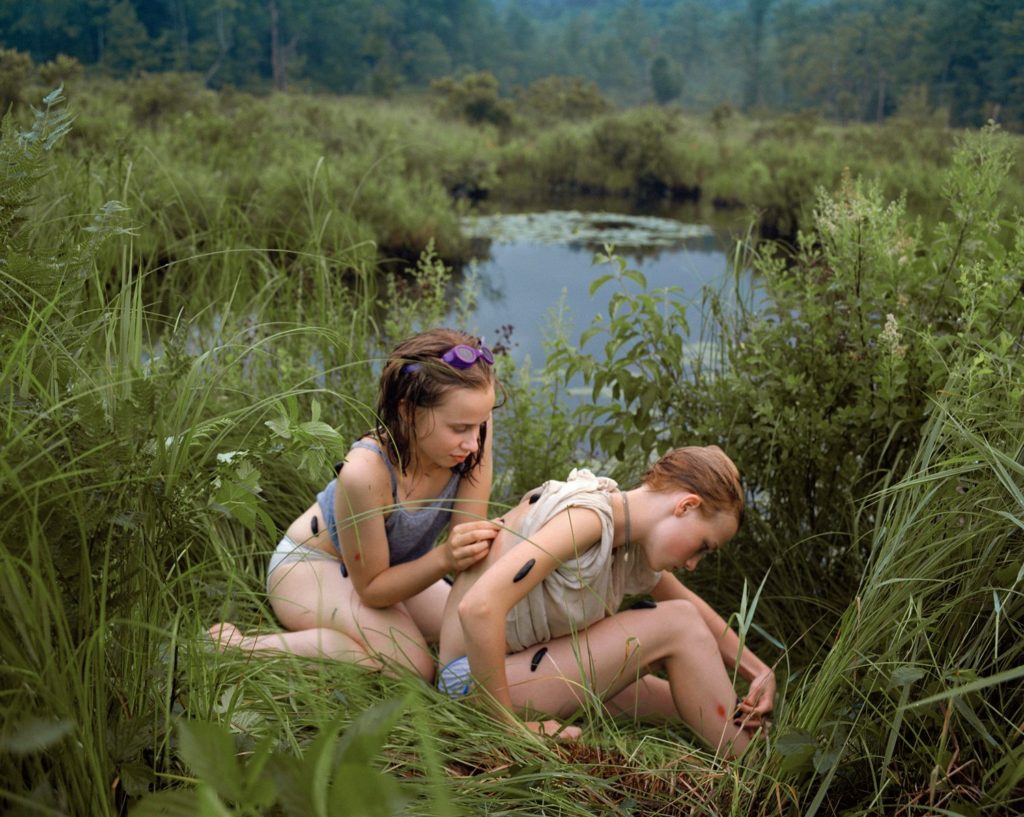
Her work appears to be a mix of images that are staged and natural. Some of the images are real life and Kurland has captured the moment, other girls are models and staged pictures. Kurland bases a lot of her work, especially her ‘girl pictures’ project on her own experiences and memories of when she was a girl.
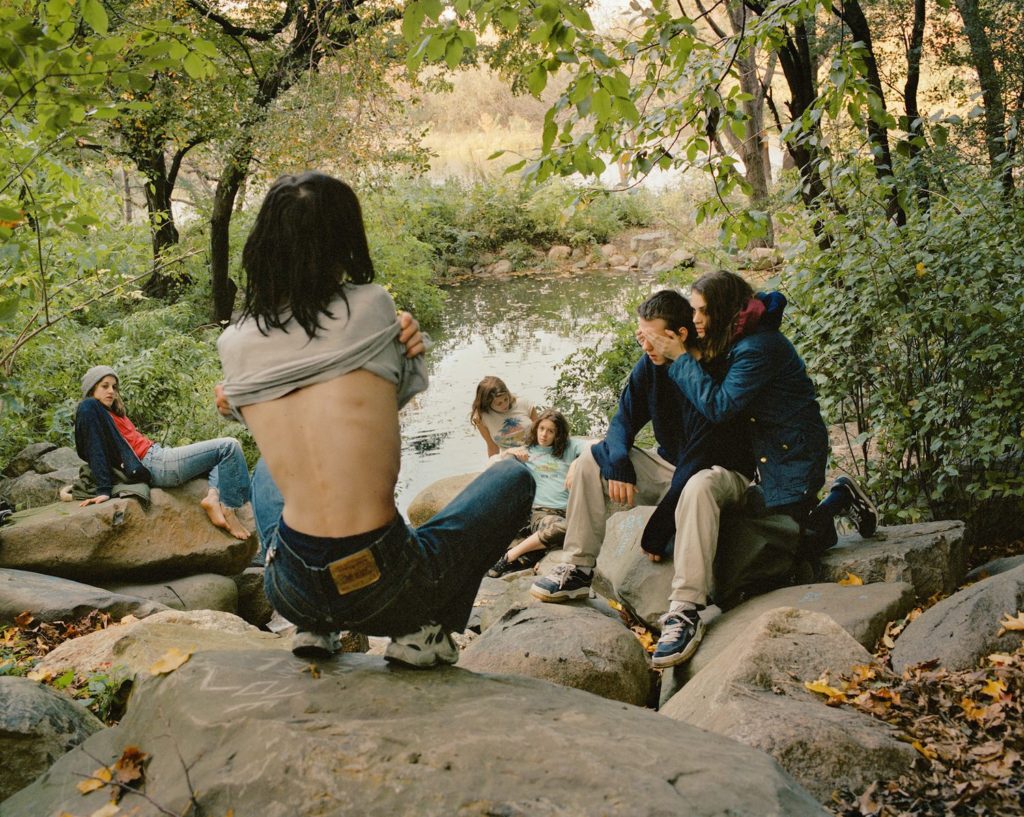
The focal point of the image is the back of a young girl who is raising her shirt. Instead of her face, we see the eyes of all the girls surrounding her, watching the big reveal. There’s one boy in the group, but his eyes are covered. A girl has wrapped her arms around him from behind and places her fingers over each of his eyes. It’s funny to see such an obvious removal of the male gaze, especially as it’s still present—and yet the delicate hands of a teenage girl prove capable of obstructing it. As viewers we look from his covered eyes to her watchful ones.

The camera stays just far enough away to keep the subjects slightly anonymous. Or perhaps it’s because they are mostly long haired, or white, or wearing similar clothing, or belonging to that vague age range that captures adolescence. Whatever it is, they begin to blend together into one visually unified group of girls. The gang picking flowers in Daisy Chain, 2000, Kurland’s focus is less on individual girls, and more on what happens when they band together.
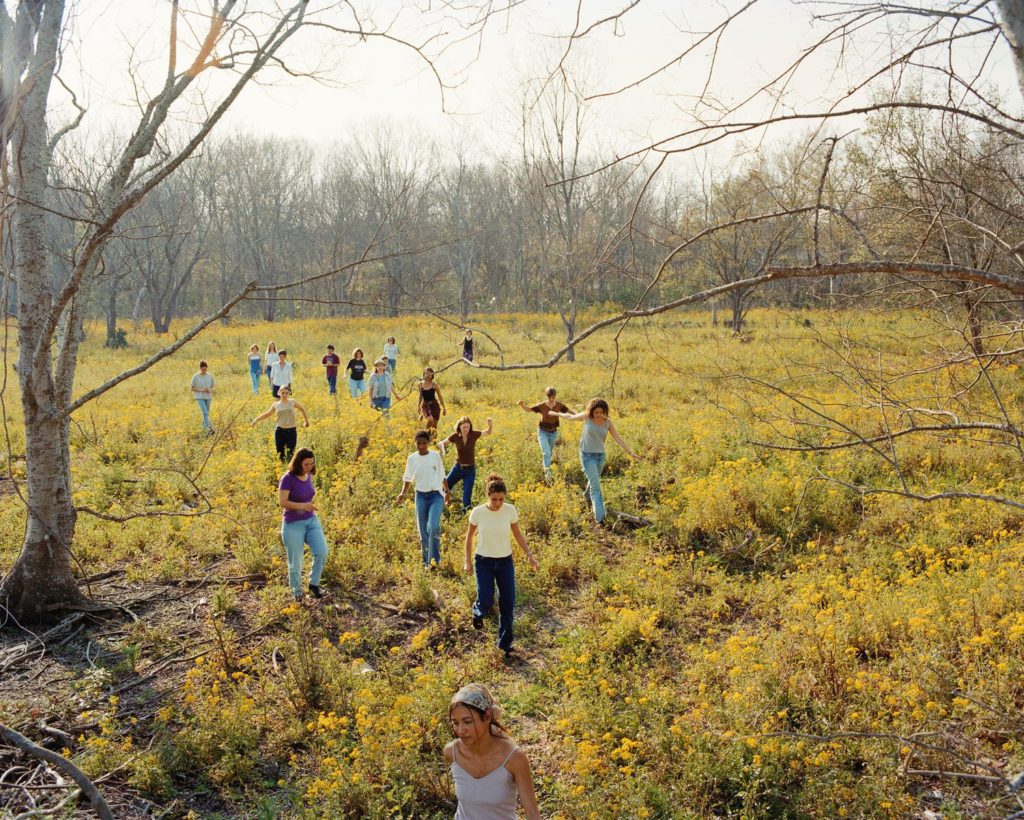
But of course with freedom comes the threat of danger. So many of the images in ‘girl pictures’ were taken outside in locations that feel desolate or easy to overlook. They are often staged under bridges or beyond fences or on the sides of highways; places that feel synonymous with warnings. The privacy of the overpass is also potent with all the stories we’ve heard of women getting hurt in such places.
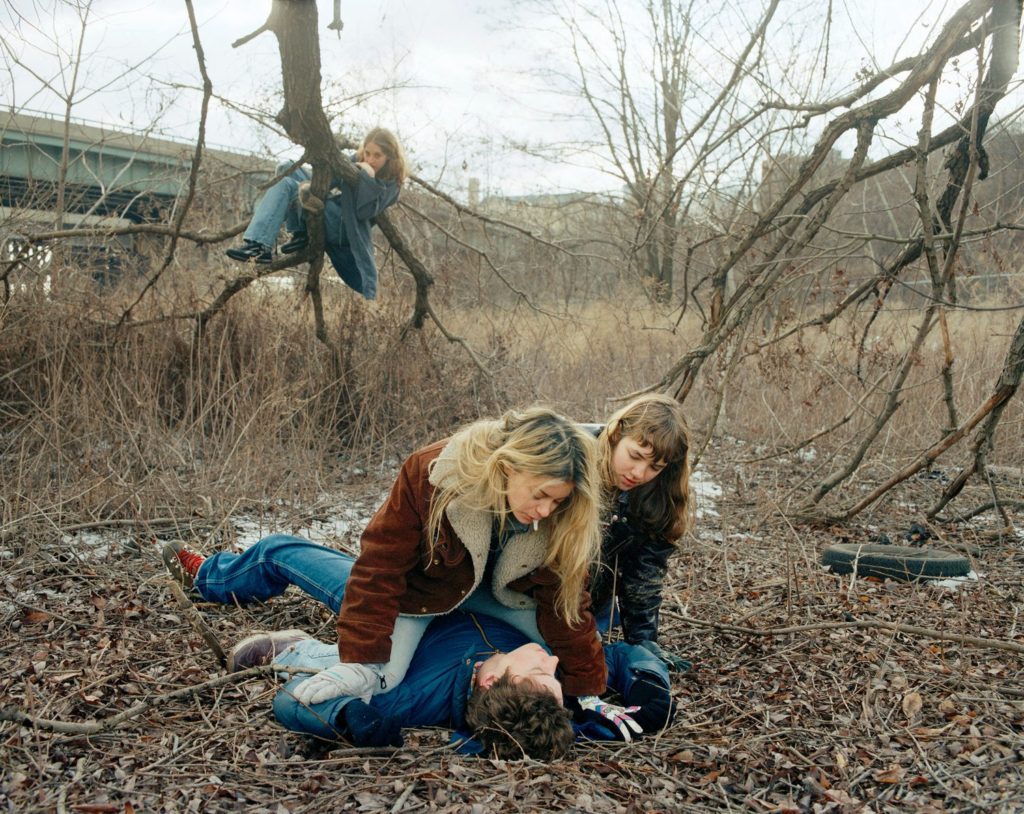
They are anything but harmless in photographs like double headed spit monster where two girls pin a boy down and spit on him, the image captured as the weight of saliva still hangs from one girl’s lips. These “Boy Torture” images are especially playful. There’s a sense of revenge inherent in them, like they are removing the boys from this kind of narrative, asserting their roles as protagonists and defying the stereotypes that men are typically more powerful and dominant, instead, showing that women can be aggressive and commanding.


We see worn out overalls holding onto a girl’s body by one strap in The Wall, 2000 and are only vaguely aware of Huck Finn’s similar getup because there’s something new happening here. The girl at the center of this image guides the others, looking past the camera as if it doesn’t even matter, as if the thing worth examining is actually behind us. What’s left after all this repetition of runaway legends and costumes are the common themes: rebellion, self-sufficiency, confidence. A kind of inverse of the American Dream, but with the same carrot on a string: freedom.
‘The images in this book weigh me down with a sense of nostalgia, and it’s not just the late nineties fashion. It’s the fact that the girls seem to be disappearing. Like catching a wild animal in a trap, it feels like by the time you look at each image of these girls you’ve already missed them. They’ve run off to someplace better or just some place that isn’t here.’
I plan on basing my project partially off Justine Kurlands work. I like her style and the way her photos are simple yet have a deeper meaning too them. I think her work relates to the topic of femininity and represents ‘girly’ things in great and different ways, some being quite cliche but powerful.
